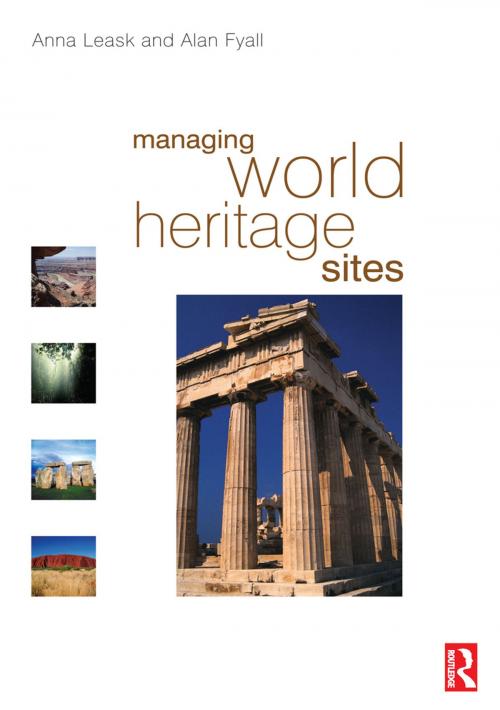Managing World Heritage Sites
Nonfiction, Home & Garden, Antiques & Collectibles, Care & Restoration, Art & Architecture, Architecture, Business & Finance, Management & Leadership, Management| Author: | Anna Leask, Alan Fyall | ISBN: | 9781136381133 |
| Publisher: | Taylor and Francis | Publication: | August 14, 2006 |
| Imprint: | Routledge | Language: | English |
| Author: | Anna Leask, Alan Fyall |
| ISBN: | 9781136381133 |
| Publisher: | Taylor and Francis |
| Publication: | August 14, 2006 |
| Imprint: | Routledge |
| Language: | English |
World Heritage Sites are some of the most recognised locations around the world. They include natural sites such as the Grand Canyon and the Great Barrier and cultural ones such as the Pyramids at Giza, the Walled City of Baku in Azerbaijan and the Historic Centre of Riga in Latvia. The responsibility to manage them successfully and ensure that the resources are not damaged by visitors, war or environment is therefore vital.
Managing World Heritage Sites covers the management issues encountered at cultural and natural UNESCO World Heritage Sites). WHS sites are high profile and as their designation states they are unique. They are often government owned and subject to political debate, they have iconic status and are therefore crucial to national tourism industries, and often involve a large number of stakeholders within their management structures. This text considers all of these aspects in arriving at solutions for site management principles. In 12 chapters and 5 case studies it covers issues such as WHS designation, marketing, visitor management, revenue generation and management. Each chapter will examine the management issues associated with managing heritage within the WH Sites, making clear use of management practices to apply the theory.
Managing World Heritage Sites:
• Includes international case studies such as World Heritage Sites in the Americas, Machupicchu, Stonehenge, Central Eastern Rainforest Reserves of Australia, Megalithic Temples of Malta.• Is authored by an international contributor team of well known and respected experts in this field
• Has a user friendly and logical structure including aims, introduction, case study, conclusion, references and websites and examples best practice.
• 5 specific case study chapters including a location map, an explanation of key issues, conclusion, and questions for self-study
World Heritage Sites are some of the most recognised locations around the world. They include natural sites such as the Grand Canyon and the Great Barrier and cultural ones such as the Pyramids at Giza, the Walled City of Baku in Azerbaijan and the Historic Centre of Riga in Latvia. The responsibility to manage them successfully and ensure that the resources are not damaged by visitors, war or environment is therefore vital.
Managing World Heritage Sites covers the management issues encountered at cultural and natural UNESCO World Heritage Sites). WHS sites are high profile and as their designation states they are unique. They are often government owned and subject to political debate, they have iconic status and are therefore crucial to national tourism industries, and often involve a large number of stakeholders within their management structures. This text considers all of these aspects in arriving at solutions for site management principles. In 12 chapters and 5 case studies it covers issues such as WHS designation, marketing, visitor management, revenue generation and management. Each chapter will examine the management issues associated with managing heritage within the WH Sites, making clear use of management practices to apply the theory.
Managing World Heritage Sites:
• Includes international case studies such as World Heritage Sites in the Americas, Machupicchu, Stonehenge, Central Eastern Rainforest Reserves of Australia, Megalithic Temples of Malta.• Is authored by an international contributor team of well known and respected experts in this field
• Has a user friendly and logical structure including aims, introduction, case study, conclusion, references and websites and examples best practice.
• 5 specific case study chapters including a location map, an explanation of key issues, conclusion, and questions for self-study















